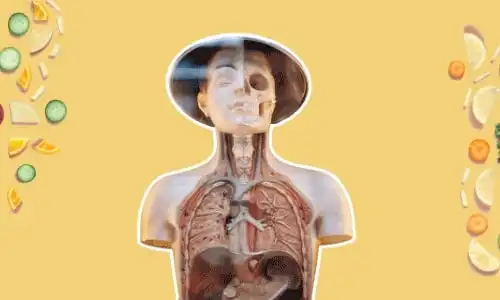
How to become a yoga instructor
Yoga involves working your body and mind. There are a variety of yoga practices, but they all embrace physical postures, technical breathing, mindfulness, and meditation. Yoga practice first started in India. The intention is to improve movement and meditation to promote mental and physical wellbeing. Regular practice improves endurance, strength, calmness, and flexibility.
There are many different practices, from peaceful Hatha to high-intensity power yoga. They all take your workout to the level of the mind-body connection. The main goal is to help you relax. Yoga improves strength and flexibility too. Participating in a yoga session has proven to boost your mood.
The origin of the Sanskrit word is Yuj which means a union of organ systems in the body with the consciousness of the mind.
Yoga can be described as the evolution of the science of consciousness. Yoga is a central part of the Indian culture and is perfecting a living style. Yoga is one of the six vital systems in Indian philosophy and can be known as the grandfather of all systems.
Yoga focuses on self-improvement both on a physical and mental level. Yoga is a system of techniques that allows you to develop your potential to the fullest, and maybe even hidden potentials.
Yoga is an ancient Indian discipline that heals the body through breathing exercises, purification processes, diet, and meditation.
This career path allows you to explore many aspects of your personality and passion. You can be a support structure for people who use it for physical and mental wellbeing.
As with any creative career, passion is essential! As a Yoga instructor, you intimately engage with people. You cultivate a sense of empathy and have good interpersonal skills. You will facilitate injury recovery, so a willingness to understand the human body is incredibly beneficial. Your initial training will only take you so far. Remain inquisitive, and you will learn and improve your skills.
Yoga has grown in popularity, so have the opportunities available to you.
Once you are qualified, you have many options:
- You can work as an instructor at a gym or studio
- Freelance and find your clients
- Start your studio
- Volunteer or do a work exchange programme overseas
You don’t need any experience, knowledge, or skills! Just an open mind and enthusiasm to move and learn. There are many facets of Yoga beyond the physical so try not to get hung up on how you feel you may not be flexible enough.
Before deciding on a qualification, you need to explore the different yoga styles and decide which one suits you best.
Before deciding on a qualification, you need to explore the different yoga styles and decide which one suits you best.
Bikram yoga:
can also be known as hot yoga. Bikram yoga is practiced in artificially heated rooms where the temperatures can reach up to 40 degrees Celsius or 105 degrees Fahrenheit and at 40 percent humidity. Bikram yoga consists of 26 poses and has a sequence of two breathing exercises.
Hatha yoga:
classes are usually there to serve as a gentle introduction to yoga postures. Hatha is a generic term for yoga that teaches physical postures.
Iyengar yoga:
focuses on finding the correct alignment in each pose. Iyengar uses a range of props like blocks, straps, blankets, and chairs.
Jivamukti yoga:
can also be known as vinyasa. Jivamukti means liberation while living. Jivamukti yoga first emerged in 1984 and incorporates spiritual teaching and practices that focus on the fast-paced flow between poses rather than the poses themselves. Each session has a different theme. The themes are explored through yoga scripture, music, meditation, and chanting. Jivamukti can be physically intense.
Kripalu yoga:
teaches practitioners to accept, know, and learn from the body. A Kripalu student will learn to find their level of practice by looking inward. Kripalu exercises generally begin with breathing exercises and stretching, followed by a series of poses, and then relaxation.
Kundalini yoga:
Kundalini means coiled like a snake. Practicing Kundalini is a system of meditation aimed to release any pent-up energy. These classes generally start with chanting and end with singing. Kundalini features asana, pranayama, and meditation, resulting in a specific outcome.
Sivananda:
is a yoga system based on a five-point philosophy. The philosophy forms a healthy lifestyle through proper breathing, relaxation, diet, exercise, and positive thinking. Sivananda yoga typically uses 12 basic asanas that incorporate sun salutations and savasana poses.
Viniyoga:
The focus is on required in-depth training that creates experts in anatomy and yoga therapy.
Yin:
can also be known as Taoist yoga, it is a quiet and meditative practice. Yin focuses on the release of tension in joints such as the ankle, knees, hips, and back.
Power yoga:
was developed in the 1980s. When practitioners developed it, it was based on the teachings and principles of the ashtanga system.
Restorative yoga:
as the name states this is a relaxing form of yoga. In a restorative class, more and less five exercises are performed. When performing the exercises props such as boosters, and blankets may be used to aid the participant in sinking deep into the relaxation. Boosters help the participant hold the pose effortlessly.
Once you have decided on the style of yoga it is time for you to find out where and how the different courses work. Here are the top yoga schools according to the sports management degree hub:
200 Hour RYT Pahoa, Hawaii
While you are doing the course you will be among 120 acres of tropical scenery on the south coast of the island. It is considered to be one of the best courses for beginners starting their journey to becoming yoga instructors. The course takes 3 weeks to complete. Vinyasa flow and Hatha practices are taught. The programme teaches the principles of alignment to create a safe and therapeutic practice.
200 Hour RYT Arcata, California
This programme is adjacent to a wildlife sanctuary while you are surrounded by saltwater marshes and a variety of bird species. The programme focuses on Vinyasa and Hatha, teaching you to develop your in-depth practice. Students can also explore Ayurveda, Upanishads, Patanjali, and the chakra system.
300 Hour RYT Pahoa, Hawaii
The backdrop of the retreat is a tropical paradise where you will spend 33 days deepening your yoga practice. It is a more advanced course that engages deeper topics such as the alchemy of yoga, pranayama, and applied Ayurveda.
200 Hour The Himalayan Yoga Institute, Nepal
The Himalayan Yoga Institute offered a comprehensive Ashtanga yoga programme. It is located in the Kullu Valley in India. You will find yourself tucked away in a valley of mountains next to traditional Himalayan cottages. This course is for any instructor level from beginner to advanced.
300 Hour The Himalayan Yoga Institute Losinj, Croatia
The location is well known for its clean water, clear air, and surrounding wildlife. It is a three-week course that entails asana, mudra, banda, driya, and Kundalini energy. You will also improve your knowledge of Raja Dhirja, Karma yoga, and many more. It is great for those wanting a comprehensive overview of the various methods of practicing and teaching yoga.
If you do not have the time or money to go to one of these magical locations it does not mean that it is the end of your yoga instructor journey. There are a variety of online course options available. According to The Produce Company, these are the best online yoga courses.
200 Hour Yoga Teacher Training by Yoga Renew
This online platform has a variety of yoga qualifications. Through training videos, weekly zoom calls, and other training resources you will learn yoga. It is a comprehensive programme that includes history, Sutras, anatomy, Kundalini, Hot, Restorative, Ashtanga, and other forms of yoga. One of the largest benefits of taking this course is lifetime access to classes, meditation scripts, e-books, and a variety of other resources.
Brett Larkin Yoga Uplifted
This course is slightly different from the other traditional yoga courses. Brett Larkin has specialised modules focusing on Fascia. Fascia is connective tissue on the outermost layer of your muscles. It also has a unique philosophy in the yoga world. The course does not need to be complete in a specific period, you have lifetime access to the materials and can work at your own pace. The programme also teaches a variety of meditation techniques and how to start a business and yoga practice.
Sampoorna Yoga 200 Hour Vinyasa Yoga Teacher Training
This yoga school has several other yoga instructor courses, but the Vinyasa seems to be the most popular. The programme provides a comprehensive look into mindfulness, Pranayama, pratyahara, Yamas, Niyamas, and meditation techniques. Your learning takes place through recorded videos, live sessions, PowerPoint presentations, reading materials, and many more.
My Vinyasa Practice
My Vinyasa practice is well known for providing personalised learning experiences and in-depth learning. It is one of the few offerings that include a trauma-informed yoga certification and Yoga therapy for anxiety. The programme includes pre-recorded lectures, a manual, access to the community, live zoom events, and limited access to all the content on the platform.
Yoga Farm Ithaca
It is run by a non-profit organisation called The School for Radiant Living at Yoga Form. It is considered to be one of the best courses for beginners who would like to become instructors. Learning takes place through pre-recorded videos, podcasts, and manuals.
As mentally and physically challenging as being a yoga instructor may be, it can be extremely rewarding too. Working in the community can form unbreakable bonds. You may have the flexibility to work your preferred hours and at your own pace. Choose the certification that best suits your needs and enjoy the journey.


